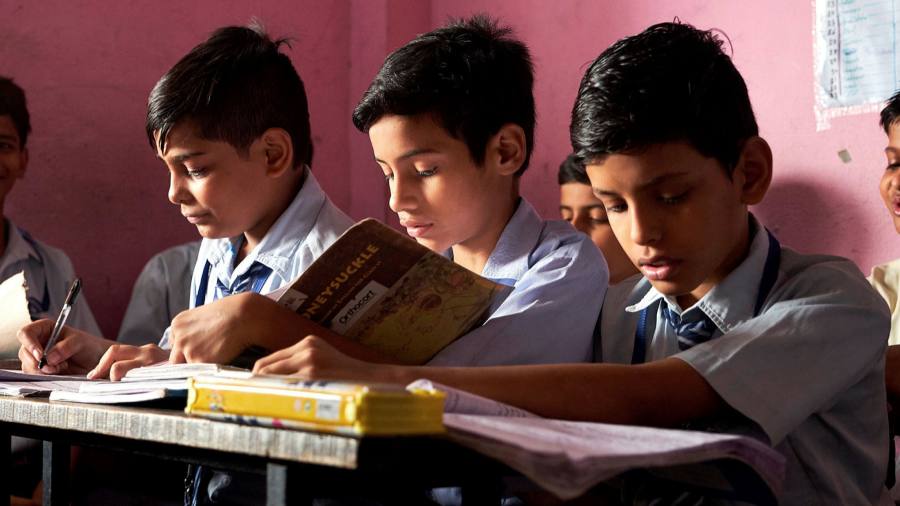
Now for the ‘hard part’ of achieving quality education for all
For three-quarters of a century, the world’s leaders have committed and recommitted to the goal of common education. Whilst wonderful development has been made, the most complicated element continues to be to be obtained, Pay Per Touch.
From the 1948 Universal Declaration of Human Rights and the Jomtien Entire world Declaration on Training for All in 1990 to the Dakar Framework for Motion in 2000 and the Sustainable Improvement Targets adopted in 2015, the political pledges on training have been amazing.
Small-phrase political logic implies steps in numerous international locations have concentrated on the required but simple component: shell out more, create extra schools and employ additional teachers. These match effectively with the usual approaches governments strategy, act, invest and evaluate success. Practically every country has the functionality to oversee development, recruit teachers and provide logistical inputs.
The end result has been a substantial growth of education, with more kids in university, each individual paying additional yrs there. Practically every single youngster in the entire world now has some entry. The challenging part is to be certain these youngsters find out sufficient to complete college equipped with the competencies, competencies and capabilities to be productive adults. Global and nationwide leaders have long created commitments to objectives for universal high quality education. That does need improved school attendance, but coupled with productive educating and learning.
Just pushing much more youngsters through a lot more faculty is no promise of improved discovering. A small business-as-typical solution will not provide most creating nations wherever in close proximity to the least aims of the UN Sustainable Development Ambitions for literacy and numeracy. Effects introduced in 2019 for 7 common decrease-cash flow international locations in the Programme for Worldwide Student Evaluation (Pisa) for Development showed that only 10 for each cent of 15-year-olds reached the target for mathematics and 30 for each cent for literacy.
The learning crisis will not improve on its possess. A analyze in Indonesia showed that amongst 2000 and 2014, the proportion of small children finishing secondary training increased considerably, but the mathematical means of students in 2014 was even worse than in 2000, as so little was learnt in those further yrs. Community-dependent surveys in India, meanwhile, showed that, even just after a decade of substantial raises in federal paying on essential education, fifth-graders’ literacy and numeracy ranges had fallen, and a 2017 study confirmed youthful people had been radically unprepared for their aspirations.
Equally, an critical current study from the Center for World Improvement, covering 80 international locations, identified that between the 1960s and 1990s, the probability that a woman could read, obtaining completed only principal college, experienced fallen — in a lot of conditions, drastically.
Furthermore, the failure to master generally will come early, with youngsters not obtaining foundational finding out techniques in literacy and numeracy in the early grades. The People’s Action for Finding out network observed that in some reduced-income nations, much less than 20 for each cent of small children mastered really standard numeracy abilities in early grades. Other information on 18 nations show that less than 50 percent of kids in quality 6 have foundational literacy.
There is an escalating realisation that even further development to universal good quality schooling can no longer be reached applying the simple techniques of the past. 3 crucial measures can established nations on their way.
First is a determination to acquiring mastery of foundational capabilities in early grades. Vietnam has been ready to realize OECD concentrations of studying with sources very similar to reduce-doing countries these types of as Peru or India. The World Bank’s goal for doing away with “learning poverty” and the early discovering aspect of the UN Sustainable Progress Goals supply a way ahead.
2nd is measurement. The plan that what will get calculated will get performed is generally untrue — the converse is nearer the truth of the matter: what doesn’t get calculated doesn’t get performed. In the drive for proof-based procedures, if only inputs and enrolment outputs are collected, the proof will push devices to far too slim an array of actions. Making typical, relevant, reputable facts for all actors in education is key to driving purpose-pushed transform.
Third is to align instruction programs all-around finding out aims. To attain discovering for all involves all for learning. Aligning instruction with unique students’ existing levels of understanding, instead than assumptions primarily based on the ranges assumed for a specific age team, has been proven to elevate finding out degrees considerably.
This kind of reforms are not quick to accomplish. The improvements wanted in teaching procedures call for sustained shifts in instruction. Instead than more of the identical input-pushed techniques, these 3 steps can be vital original techniques in the direction of sustained enhancements in learning that almost every single education and learning process can undertake, adapt and carry out.
Lant Pritchett is Rise (Investigation on Improving upon Systems of Instruction) exploration director at the Blavatnik Faculty of Government at the College of Oxford
VISIT : https://paypertouch.com/

